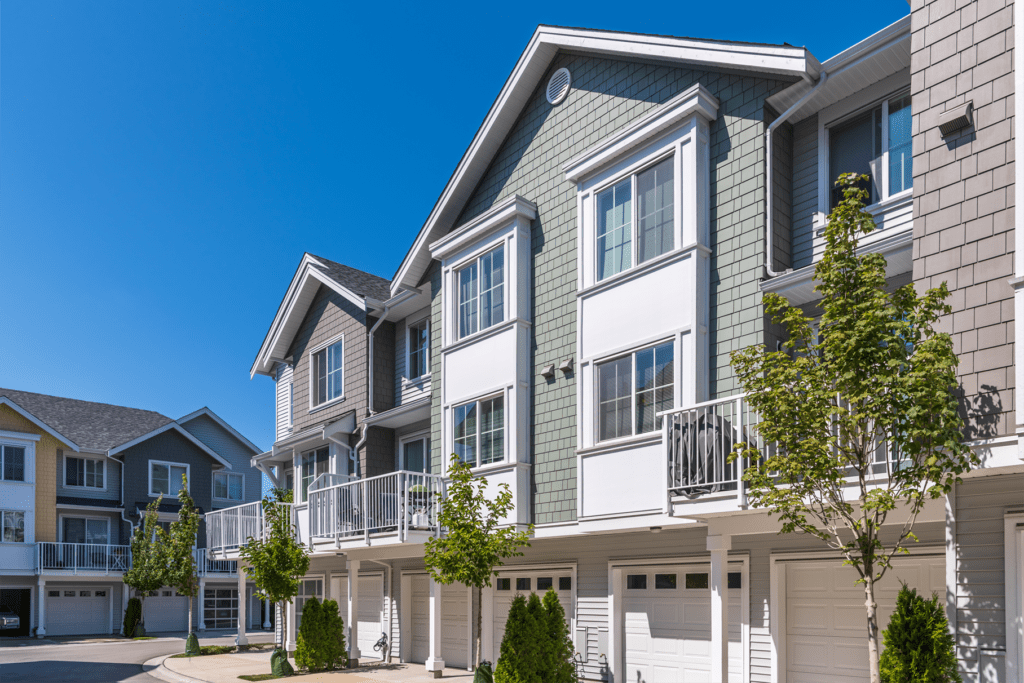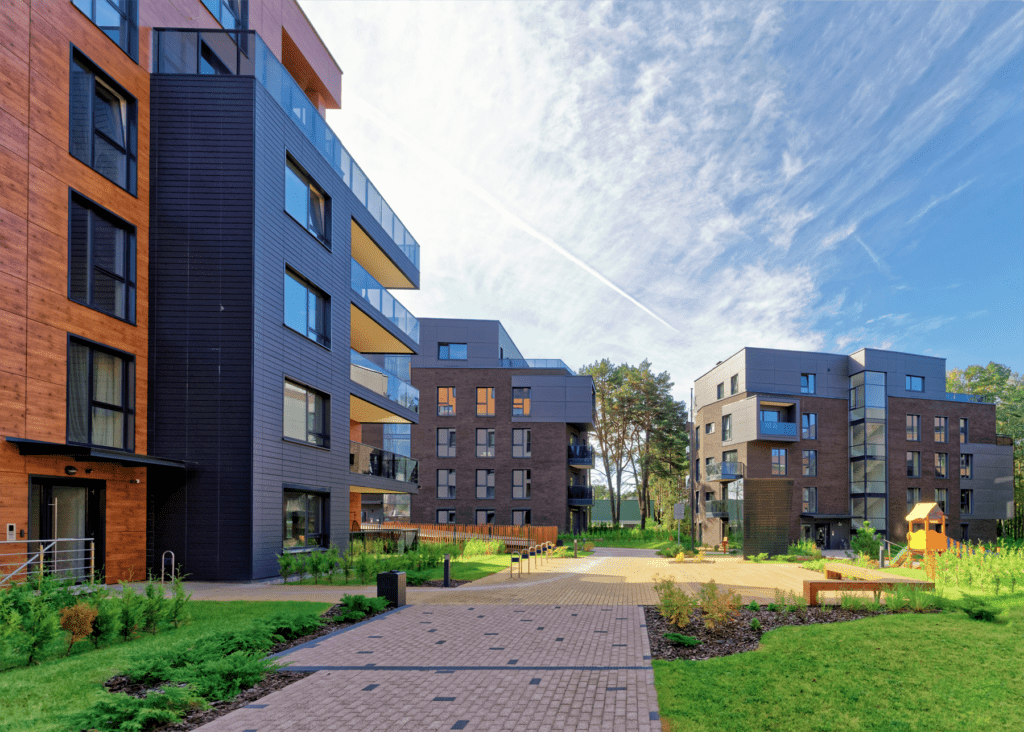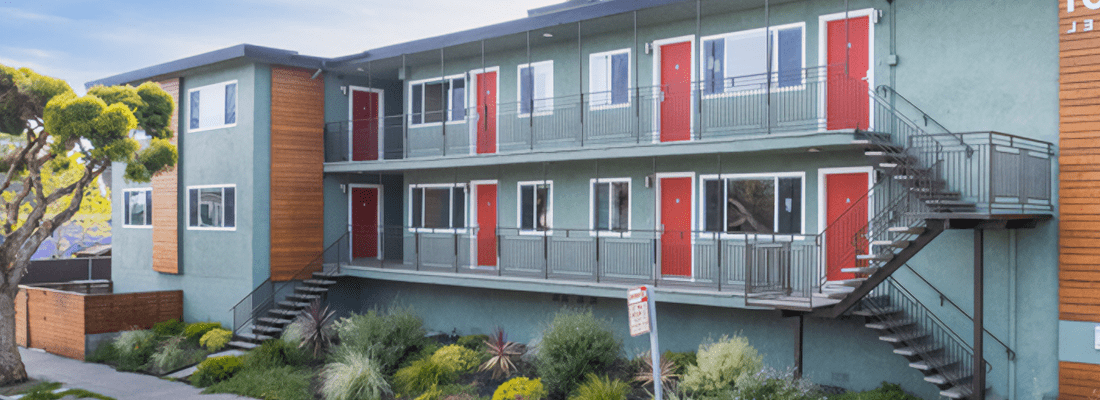In the past few months, we have published a couple of robust overviews of DSCR Loans, a popular loan product that has entered the scene of the past few years. DSCR Loans enable investors to qualify for mortgage loans on investment properties without consideration of personal income (“DTI”) ratios. These loans are a top option for investors scaling portfolios, especially for single family rental properties.
Qualifying for the best rates and terms for DSCR Loans is primarily driven by three factors: leverage, property cash flow and credit. After that, investors can use Advanced Strategies such as optimally structuring loan terms such as prepayment penalties, adjustable rate options and borrowing entities to tailor DSCR Loans to their specific investing needs.
DSCR Loans are typically a best option for investors ready to scale. First time investors are usually better suited for conventional financing, which typically have slightly lower rates. Investors generally “graduate” to DSCR loans after having a few investment properties under their belt. Due to limits on the number of conventional loans that can be used for investment properties, DTI qualification becomes much tougher with a growing portfolio. The hassle and paperwork can become too much when trying to scale aggressively. DSCR Loans are a great option for a first or second time investor, especially for those who don’t have steady W2 income. The DSCR loan product is really best suited for investors scaling their way to financial freedom.
More Doors – Ready to Scale
The path of many investors on the journey from real estate rookie to a professional portfolio is to start small. This can mean house hacking a duplex, utilizing ultra-low down payment government-sponsored loan products or experimenting with renting out a vacation property part time. After gaining well-worn experience owning and operating properties many investors realize to take the proverbial next step. They need to shift focus towards seizing opportunities for new deals and more units. Investors in this growth phase don’t have the time to deal with all of the headaches of self-management, conventional loan packages and the constant personal upheaval of moving every couple of years while “hacking” the process.
When investors face this phase of their investing journey, it often comes hand-in-hand with an interest investing in multifamily. The reasons are obvious. When it comes to cash flow, generally the more units the better. Why settle for collecting one check from a tenant in an SFR when you could get eight checks a month in an octuplex? There are also economies of scale. Hiring a property manager to deal with maintenance, tenant issues, leasing, etc. in a single family property can really cut into cash flows. At the same time, doing it yourself can eat up a lot of time and energy. With multiple units, the cost of a property manager is much more reasonable considering it will likely be a far smaller portion of the property’s rental income.
Generally, the economics, in terms of cash flow, are far more friendly when you have multiple units rented out. In addition, while as or more important if harder to quantify, the time and energy considerations are often much better too – its far less demanding to find, own and operate one eight-unit property than eight separate single family rental properties all across town!

Definition of “Multifamily”
In real estate financing, the definition of what exactly qualifies as a “Multifamily” property is not as straightforward as it sounds. Most simply, multifamily should mean any property that has more than one unit. In theory, everything from a duplex (two units) to a 300+ unit high-rise should count. However, when it comes to the mortgage industry, 2-4 unit properties actually do not fall under the “Multifamily” bucket.
The quasi-government agencies such as Fannie Mae and Freddie Mac dominate real estate finance in the United States. They pool mortgages into securitizations consisting of 1-4 unit backed properties. These “conventionally” financed mortgages have a limit at four units, and all fall under the “residential” bucket. The mortgage-backed securities are referred to as “RMBS” or “Residential Mortgage Backed Securities.” Any loan secured by a property with five units or more is considered “Multifamily” and not eligible for RMBS securitization. They are typically lumped in with only larger multifamily properties or other commercial real estate loans in “CMBS” deals or “Commercial Mortgage Backed Securities.”
DSCR Loans typically fall under the “Non-QM” bucket for RMBS securitizations, traditionally limited to properties of no more than four units. But this definition is arbitrary calling a four-unit property “residential” but a five-unit “multifamily” is more so based on Freddie/Fannie rules than logic. And a great thing about “Non-QM” loan programs is that they do not have set and strict rules that loans that qualify for conventional products (“QM”) must follow – DSCR lenders and securitization platforms can be much more creative and flexible. DSCR Loans for properties more than four units are a great example of this!
Multifamily DSCR Loans
DSCR Loans were traditionally limited to properties with between one and four units. In the last couple of years, forward-thinking DSCR mortgage lenders have expanded the product to properties with up to eight or even ten units. Some lenders branched out further, expanding the product to include mixed-use properties containing commercial units as well.
The Multifamily DSCR Loan is an exciting new option for real estate investors looking to scale and enter the multifamily sector. Just like it’s often best for real estate rookies to “start small”, the same holds true for multifamily investing. Those new to multifamily investing should focus on properties with door counts in the single digit range. Jumping right in to large complexes and complicated syndication structures with no experience is a recipe for disaster.

Traditional Multifamily Loans vs. Multifamily “DSCR Loans”
Multifamily DSCR Loans, eligible for properties with a range of 5-10 Units, have a similar structure to standard DSCR Loans. This can be quite a contrast in multiple ways when compared to more traditional multifamily financing options, which are closer in terms and structure to loans secured by commercial real estate (such as offices, retail and industrial properties). Also, its important to note, that DSCR Loans and the traditional small balance commercial real estate loans described here are applicable to stabilized or turnkey properties only. This means fully leased or leasable properties requiring no immediate repairs or rehabilitation. “Value-add” properties set to undergo a substantial renovation or turnover are covered by different loan products.
Key Differences: Traditional Multifamily Loans vs. Multifamily DSCR Loans
-
Loan Structure and Term
- Multifamily DSCR Loans are 30-year loans and are fully amortizing (fixed payment throughout) from the start. The interest-only option also amortizes on a 30 year schedule after interest-only payments for the first 10 years.
- Traditional Multifamily Commercial loans are typically 5-10 year terms. This loan option amortizes on a 20-30 year schedule and requires a “balloon” payment at maturity. This creates immense refinance or selling pressure towards the end of the term
-
DSCR Calculation
- A key difference, the underwriting for Multifamily DSCR Loans is more like single family rental investment property loans. The DSCR equation is Rent divided by PITIA (principal + interest + tax + insurance + HOA) expense.
- Traditional Multifamily lenders will calculate DSCR through the traditional commercial method, which is Net Operating Income divided by debt service. Here, the numerator is inclusive of property tax and insurance numbers. Most importantly, NOI includes many more expenses such as repairs and maintenance, utilities, management fees and allocations for vacancy and credit loss and replacement reserves. This method of underwriting results in a much larger expense number and a less attractive DSCR
-
DSCR and LTV Requirements
- Multifamily DSCR Loans are much to qualify. Not only is the DSCR calculation more forgiving (includes fewer expenses), the DSCR minimum is usually a 1.15x or even 1.00x DSCR ratio! Leverage (LTV Ratio) is generally up to 75% as well, allowing investors to purchase with as little as 25% down.
- Traditional Multifamily lenders will not only have a notably more conservative DSCR calculation method, but higher DSCR minimums too. The typical DSCR minimum is 1.25x. Leverage can sometimes be higher – however with current high rates, shorter amortization terms and with high DSCR hurdles, the maximum leverage can now fall closer to the 55%-65% range.
-
Interest Rates
- Multifamily DSCR Loans will tend to have interest rates that are a bit higher than traditional small balance commercial lenders. However, most real estate investors focus on cash flow. They care more about the monthly payment, rather than the interest rate. In fact, the math can be very surprising for a lot of borrowers when you crunch the numbers. Let’s look at this example, a $500,000 loan under representative structures:
-
-
- Multifamily DSCR Loan
- $500,000 Loan Amount
- 8.500% Interest Rate
- 30-Year Fixed Rate Term, 10-Year Interest-Only Option
- = Monthly Payment of $3,541.67
- Multifamily DSCR Loan
-
-
- Traditional Small Balance Commercial Multifamily Loan
- $500,000 Loan Amount
- 7.000% Interest Rate
- 10-Year Fixed Rate Term, 25-Year Amortization
- = Monthly Payment of $3,533.90
- Traditional Small Balance Commercial Multifamily Loan
Despite the interest rate being a whopping 150 basis points lower for the traditional loan option, the monthly payment is essentially the same! (A difference of $7.77 per month, or 0.22%!) Once you run these numbers, its clear why even with higher rates, investors love the Multifamily DSCR Loan option. You end up with the same monthly payments coupled with a much easier qualification, longer, more stress-free terms (no balloons!) and likely higher leverage!
Multifamily DSCR Loans – The Best Kept Secret?
So are Multifamily DSCR Loans the best kept secret in financing for real estate investment properties? Arguably, Yes! Multifamily DSCR Loans are still a niche product. To our knowledge, this product strictly caps out at properties with the specific unit range of five to ten. It’s surprising how many properties nationwide fall into this bucket. With current trends pushing communities towards building for multi-unit housing, it stands to reason this niche will only grow in terms of opportunity and volume over time! Multifamily DSCR Loans should be in the toolkit of any real estate investor scaling their portfolio towards financial freedom. If you are reading BiggerPockets, chances are this describes you now or in the near future!)
EasyRent: Multifamily DSCR Loan Solutions
Searching for a lender with relevant options geared specifically towards Multifamily DSCR Loans? Look no further than Easy Street Capital! Our EasyRent DSCR Loan Program is tailored to meet the needs of the modern real estate investor and is regularly updated to meet market needs. Whether you’re using the BRRRR method, scaling an STR portfolio, a seasoned pro, or even a first-time investor, we’ve got the perfect loan for your situation!
Start Today!
About the Author
- Short Term Rentals Investing Guide: Flagstaff, Arizona - July 2, 2024
- Investment Property Interest Rates – July 2024 Update - July 1, 2024
- Short Term Rentals Investing Guide: Orange County, California - June 24, 2024

Stay in the Loop
Subscribe to our newsletter

